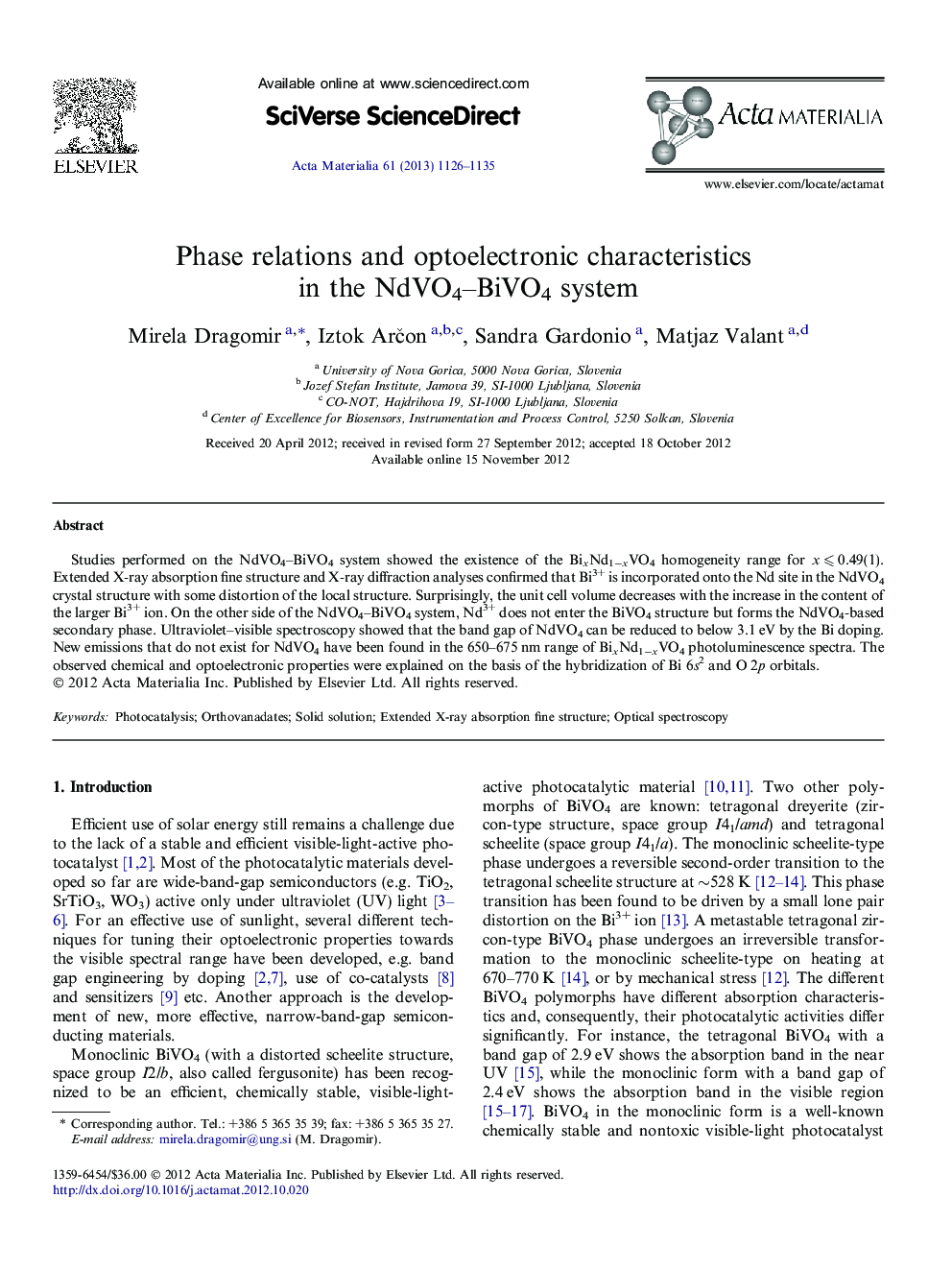| Article ID | Journal | Published Year | Pages | File Type |
|---|---|---|---|---|
| 1446343 | Acta Materialia | 2013 | 10 Pages |
Studies performed on the NdVO4–BiVO4 system showed the existence of the BixNd1−xVO4 homogeneity range for x ⩽ 0.49(1). Extended X-ray absorption fine structure and X-ray diffraction analyses confirmed that Bi3+ is incorporated onto the Nd site in the NdVO4 crystal structure with some distortion of the local structure. Surprisingly, the unit cell volume decreases with the increase in the content of the larger Bi3+ ion. On the other side of the NdVO4–BiVO4 system, Nd3+ does not enter the BiVO4 structure but forms the NdVO4-based secondary phase. Ultraviolet–visible spectroscopy showed that the band gap of NdVO4 can be reduced to below 3.1 eV by the Bi doping. New emissions that do not exist for NdVO4 have been found in the 650–675 nm range of BixNd1−xVO4 photoluminescence spectra. The observed chemical and optoelectronic properties were explained on the basis of the hybridization of Bi 6s2 and O 2p orbitals.
